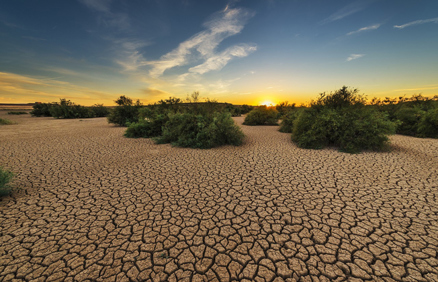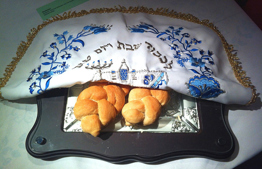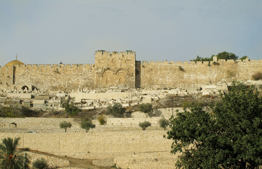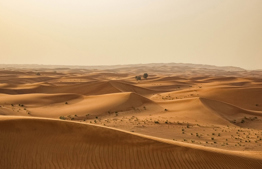Parashat Shemot: The Land of Diversity

Why are all the Canaanite nations listed in the message of redemption at the burning bush, and what do we learn from it? Also: about the apple scion grafted onto a crab apple rootstock by residents of Ariah. What do we learn about kilei ilan and where exactly is Ariah?
"I have come down to rescue them from the Egyptians and to bring them out of that land to a good and spacious land, a land flowing with milk and honey, the region of the Canaanites, the Hittites, the Amorites, the Perizzites, the Hivites, and the Jebusites" (Shemot 3:8).
What is the purpose of the list?
The prophesy of redemption that Moshe suddenly receives at the burning bush would be drastically life-altering—for Moshe himself, for the nation, and for the entire world. This message includes not only a promise for redemption from bondage and exodus from Egypt, but also that the nation would enter the Land of Canaan, whose qualities are mentioned in the verse. While it will take time to reach this stage, the message is uplifting since it is the light that we've been waiting to see at the end of the tunnel.
However, after the land's qualities are enumerated, so that we would have no doubt as to where this place is, the verse states "the region of the Canaanites, the Hittites, the Amorites, the Perizzites, the Hivites, and the Jebusites." This comprehensive list is puzzling. What is the purpose of listing all the six corrupt nations residing in Canaan? Wouldn't it be sufficient to simply say "the land of Canaan," and we'd know which land is in question. This detailed list of nations, among the verses of encouragement to the Jewish People, seems to contradict the original goal—to be encouraging. G-d is essentially saying here: I'm going to bring you to a wonderful land, but know that there are other nations there today. Not one, but six nations, who you will have to fight in order to conquer the land. What's the point?
Infinite vs. Infinite
To answer this question, we'll go one step backwards. Moshe comes to the conclusion that he needs to flee Egypt when he sees one Israelite act violently to another, and sees that they inform on him as a result. The words "אכן נודע הדבר" "now the matter is known" (Shemot 2:14) is explained by Rashi homiletically: "Now I know the matter that I have wondered about: how have the Israelites sinned, more than all 70 nations, to deserve back-breaking forced labor? Now I understand they deserve it."
Moshe notices the problem that perhaps explains the excruciating slavery: the flawed relations between man and fellow man. When G-d informs Moshe about the upcoming redemption, He needs to also let Moshe know that there is a solution to the problem. If there wasn't, what's the point? If the factor causing the slavery is still present, history could easily repeat itself.
Essentially, the factor that generally sparks anger and quarreling between people is the differences in personality. Each person has a certain spiritual quality rooted in the infinite, G-dly soul—but it only expresses one aspect or several aspects of the infinite, since man is by nature limited. The encounter between people is, in truth, an encounter between different aspects of the infinite. However, since each person believes they are the representatives of the infinite truth (and they are, indeed, tied to it), this can spark conflict with someone else who believes the same about themselves. This situation is frustrating since it is fundamentally true, and not due to flawed character traits, and this can perhaps explain the major disputes between different tzaddikim who espoused various true, spiritual approaches.
There's room for everyone in the Land of Israel
What's the solution? First, the awareness that there are many manifestations of the infinite provides extra depth to the statement "אלו ואלו דברי אלוקים חיים" "these and those are the words of the living G-d." Furthermore, this awareness obligates us to internalize that in order for the word of G-d to be fully revealed in this world, there need to be many different manifestations of it. The approach of the Other to the service of G-d is important, precisely because it's different from mine; without it the manifestation of G-d's word in the world would be lacking. Of course this does not mean that every approach is correct. Each must be probed and inspected individually; but the fundamental principle holds true.
When G-d informs Moshe that the Jewish People will leave Egypt and come to the Land of Israel, He wants to let Moshe know that the underlying problem of anger and mutual enmity will be resolved. The Land of Israel is a diverse country, with vastly different climates relative to its size (and even regardless of size), which accounts for its vast variety of flora and fauna. The different nations who are able to coexist as neighbors attest to the country's unique character, which allows for different types of people to live side by side. This is the reason that the comprehensive list of the nations is provided here, as one of the praises of the country.
This is the simple sense of this concept. The Ba'al Shem Tov offers a deeper explanation of the matter: the seven nations (we won't go into the seventh nation here, the Girgashi, who fled Canaan prior to Yehoshua's conquest) embody different spiritual qualities (middot), manifested in their negative sense. Each of these nations correspond to a different G-dly trait: chesed, gevura, tiferet, netzach, hod, yesod, and malchut (a.k.a. the seven sefirot). Each quality is the revelation of one aspect of G-dliness, and the Land of Israel is unique in that it allows for each pure spiritual quality to develop alongside the others.
Grafting in Ariah
"In the Ariah district they would graft apple [shoots] onto hawthorn [shoots]. One disciple found them and said: These are forbidden! They went and pruned them. They went to inquire [about the matter] in Yavne. [The rabbis said]: what the disciple said was correct."
Tosefta Kila'im 1:3
A mitzvah tied to the Land of Israel that also applies abroad
Grafting is a standard technique used until today, meant to combine the survival abilities of one tree with the high fruit quality of another. This is accomplished by grafting the scion—a shoot from the tree whose fruits we want to produce—onto a rootstock, which is hearty and can better withstand soil maladies, pests, and the like. The rootstock serves as a strong basis for the scion. There are a number of grafting methods, in each where the scion is "implanted" in the rootstock. This act is not halachically problematic in and of itself if performed with two varieties of the same species; when the scion is from one species while the rootstock is from another, this is considered a transgression of the prohibition against kilei ilan, forbidden grafting. The first chapter of tractate Kila'im delineates a detailed list of related species that are not similar enough to be exempt of the kila'im prohibition. Note that the question of whether two varieties are considered kila'im can be linked to modern taxonomy, but it isn't necessarily identical to this division. The relevant criteria for halachic plant classification include: the leaves' appearance, the fruits' appearance, and taste.
Apple and Hawthorn Trees
Included in the list of species similar to one another but nevertheless forbidden for grafting onto each other are the apple and the hotzarad trees (or ozarad, as it appears in the Tosefta), which is identified as the hawthorn—a relative of the apple tree. Both are from the Rosaceae family; its fruit looks like small apples. While there are differences of opinion as to the identity of the tapuah in biblical sources, even among the Rishonim, here in the Tosefta (as in other sources) it seems that the tapuah is identified with the modern apple tree. This is because grafting can generally take place only when there is some genetic similarity between species—which exists between the apple and hawthorn trees (while no such similarity is present with regards to an etrog tree, another possible identification of the biblical tapuah).
In the incident cited in the Tosefta above, which took place in the Ariah district, an apple shoot—a domesticated species with a high fruit quality but also susceptible to maladies—is grafted onto a hawthorn—a wild species, and thus more hearty. Even after a forbidden graft is performed, it is forbidden to sustain the forbidden graft and it must be pruned. This is exactly what the G-d fearing residents of Ariah did when censured by the disciple, even before they received official directives from the Sanhedrin in Yavne. Note that even though the Shulchan Aruch and most Aharonim forbid sustaining a forbidden grafted tree, two Aharonim (Chatam Sofer and Aruch HaShulchan) permit this as long as the tissues of the two trees have already consolidated and the graft is no longer obvious.
Where is the "Ariah district"?
Because kilei ilan is forbidden abroad, as opposed to most of the other mitzvot tied to the Land of Israel, it is difficult to use this source to identify the Ariah district. In any case, the word "district" informs us that Ariah was major city that served as the center for other subdistricts. Rabbi Prof. Shmuel Klein identifies Ariah with Beit Yare'ah, situated on the southwestern shore of the Kinneret, which served as the capital of the region prior to the establishment of Tiberius in 1 CE. Some find difficulty with this approach: since Beit Yare'ah (or Beit Yeriho) is mentioned in the Talmud, why is the city referred to by another name by the Tosefta? The first of modern Land of Israel scholar Rabbi Yehosef Schwartz, author of Tevu'ot Ha'aretz, proposes that this could be the Aryeh region, or Kefar Ariyeh. Rabbi Yaakov Moshe Toledano (in the periodical Yerushalayim, issue 10) offers several proposals for Ariah: the Dir al Assad area ("house of the lion" in Arabic), next to Karmiel; Kafr Assad ("village of the lion") in the Gilad area (Jordan; not far from the Kinneret). Two more proposals, whose names today are closer to the word Ariach include: Kafr Arha, in the Houran region (Syria) and Jabal al Rehan (Lebanon). Note that the last four, areas with cooler climates, are more suitable for apple cultivation than is the warm Beit Yare'ah, situated 200 m below sea level.




